Shoes for Kids with Cerebral Palsy – Wide Opening, Supportive, Deep, and with a Round Toe-Box!
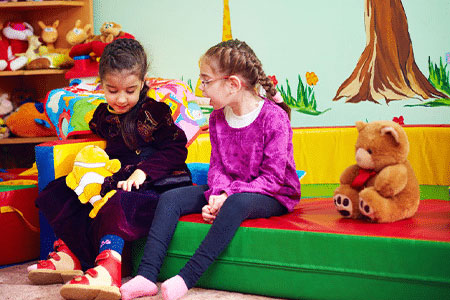
Children with cerebral palsy face unique mobility challenges like muscle stiffness, poor coordination, and balance issues—making the right footwear essential. Moreover, these children may also experience swelling or uneven foot sizes, requiring shoes that can adapt to these changes. Regular shoes often lack the support and flexibility these kids need. The best shoes for kids with cerebral palsy offer a stable base, firm heel counters, and enhanced support to improve foot posture, walking gait, and overall coordination. Remember, every child’s needs are different—while some might only need supportive shoes, others may require extra support and stability from orthotics.
How Can Supportive Shoes Help Kids with Cerebral Palsy?
The right shoes can make a powerful difference in improving stability, coordination, and overall posture—helping children with cerebral palsy stand taller and walk straighter. Many kids with CP are also fitted with orthotics like AFOs (Ankle-Foot Orthotics), which play a key role in supporting mobility. When children with cerebral palsy begin their journey toward greater independence, supportive shoes combined with orthotics often provide the essential support they need to move more comfortably and confidently, enhancing their quality of life every step of the way.
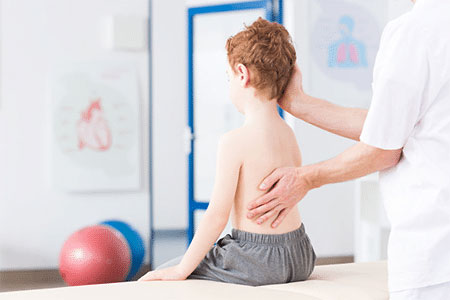
Must Children with Cerebral Palsy Wear Orthotics?
Children with cerebral palsy aren’t required to wear orthotics, but these devices are often a valuable tool in their care. Orthotics—like braces—help support, stabilize, and enhance the function of the legs and feet, making movement easier and more comfortable. Whether your child needs orthotics, and which type is best, depends entirely on their unique needs and is carefully determined by their healthcare team.
Five Key Shoe Features for Kids with Cerebral Palsy
These five key features work together to enhance your child’s foot posture, boost coordination and balance, and comfortably accommodate their orthotics—all supporting healthier, more confident steps every day.
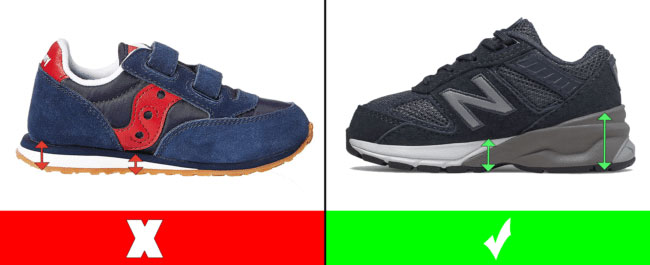
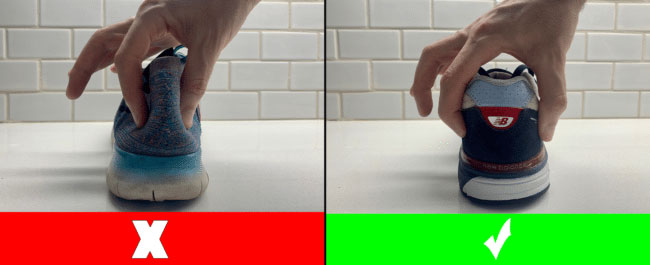
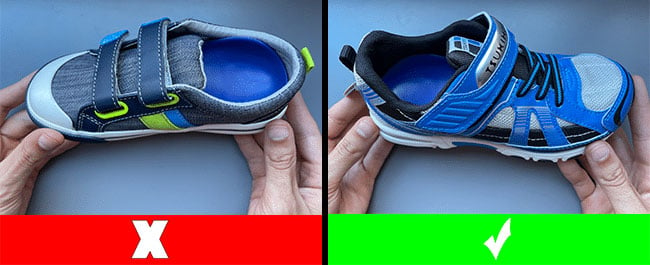


Why Ordering the Correct Shoe Size Matters
Ordering the correct shoe size is paramount, particularly for children with CP. Ill-fitting shoes can cause discomfort, hinder mobility, and even exacerbate existing conditions. Shoes that are too tight can lead to pressure sores, while those that are too loose can cause instability and increase the risk of falls.
I created a virtual shoe fitting service that makes it easy to find your child’s exact shoe size from the comfort of your home. This tool will not only tell you whether your child has narrow, medium, wide, or extra wide feet—it will also help determine if they have a high instep, ensuring a perfect fit every time.
With advancements in shoe technology and design, there are several excellent options available for kids with CP. Disclosure: Some links may be affiliate links, meaning we earn a small commission at no extra cost to you.
Supportive and Deep Shoes for Kids with Cerebral Palsy
All of the shoes below are orthotic-friendly, making them a great option if your child needs extra support. If your child already wears orthotics—whether 3/4 length, full-length, AFOs, or SMOs—the shoes I recommend are specially selected to comfortably and effectively accommodate them, just make sure you select the wide or extra wide width.
1. 990v6 by New Balance with Laces
These are the best New Balance shoes for cerebral palsy, and they are available in wide and extra wide widths.
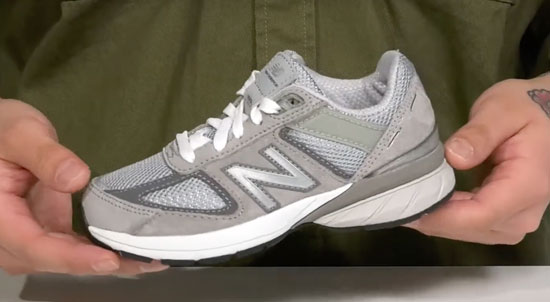
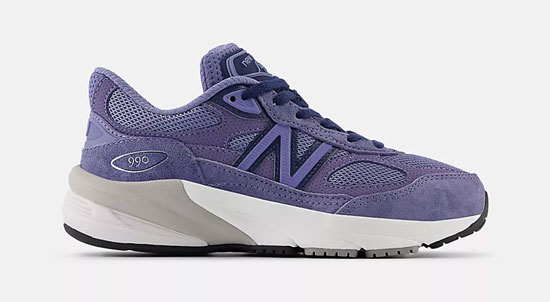
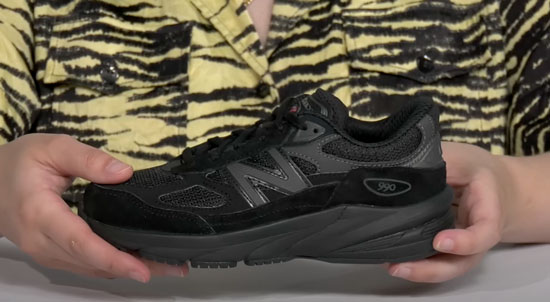
Key Features
- Available for toddlers, little, and big kids
- You can order the 990v6 with laces on the New Balance website, Amazon, or Zappos
- Also available in pink and navy blue
- Available in medium, wide, and extra wide widths
- I suggest that you get this shoe a whole size larger than your child’s current foot size
990 Series with Velcro
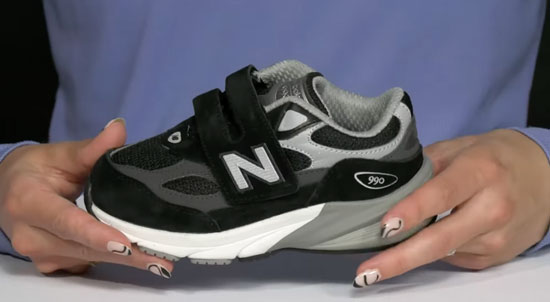
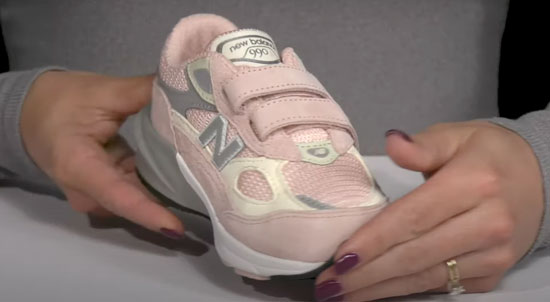
- You can order the 990v6 with velcro on the New Balance website, Amazon, or Zappos
- Also available in grey and black
- Available in medium, wide, and extra wide widths
- I suggest that you get this shoe a whole size larger than your child’s current foot size
2. Dean Adapt II by See Kai Run
These adaptable shoes for cerebral palsy provide extra long straps and extra depth to allow the child’s feet to sit deeply inside the shoes. These shoes have a lightweight design.

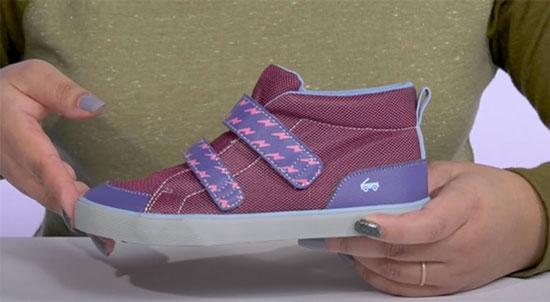
Key Features
- Available for toddlers and little kids
- Order the shoe style Dean Adapt II by See Kai Run on Zappos or Amazon
- Not available in wide or extra wide widths but fits naturally wide
- I suggest that you get this shoe a whole size larger than your child’s current foot size
3. Shoe style Holly Mary Jane by Stride Rite
These extra wide Stride Rite shoes for kids with CP are stylish and parents love them because their children can use them for casual wear or dressier occasions.
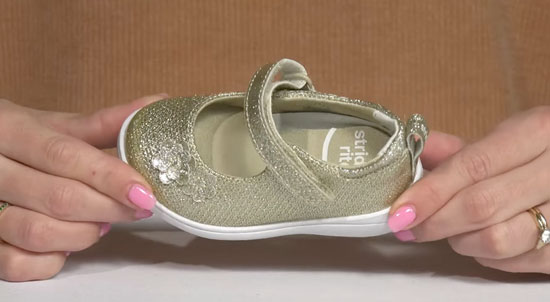
Key Features
- Available for toddlers and little kids
- Order the shoe style SR Holly by Stride Rite on Zappos or Amazon
- Available in extra wide widths
- I suggest that you get this shoe a whole size larger than your child’s current foot size
4. Ikiki Shoes
Ikiki shoes are designed with a focus on functionality and fun. They feature extra wide toe-boxes that support natural foot movement, and many of their designs include playful characters and bright colors that toddlers love.
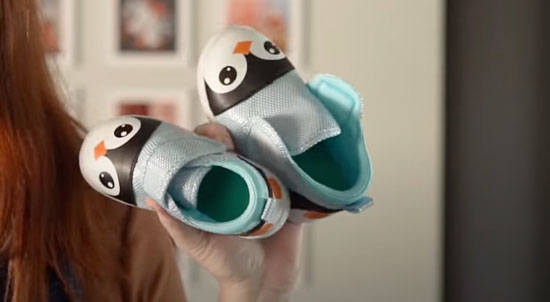
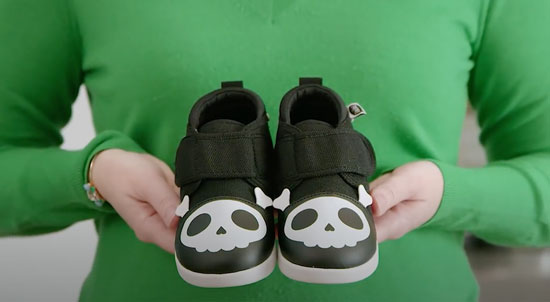
Key Features:
- Available for toddlers and little kids
- Order the shoe style by Ikiki on Amazon
- Not available in wide or extra wide widths but fits naturally wide
- Wide opening to make it easy to put on and take off shoes
- Synthetic Vegan Leather
- Squeaks can be turned on/off with a switch
- I suggest that you get this shoe a whole size larger than your child’s current foot size
5. Shoe Style M2P Journey 3.0 Adapt by Stride Rite
These extra wide Stride Rite sneakers for kids with cerebral palsy are part of the Stride Rite adaptable line and come with extra long velcro straps and are available in extra wide widths.
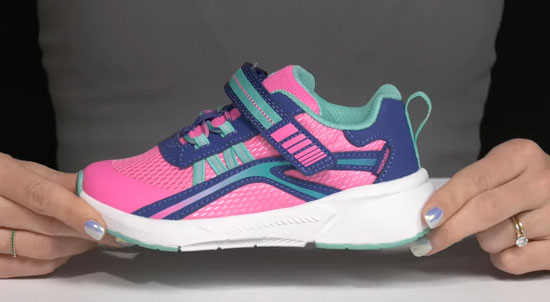

Key Features
- Available for toddlers and little kids
- Order the shoe style M2P Journey Adapt by Stride Rite on Zappos or Amazon
- Available in extra wide widths
- I suggest that you get this shoe a whole size larger than your child’s current foot size
6. Billy Shoes
These Billy extra wide shoes have become a favorite among families with children with cerebral palsy who require wider shoes with extra depth that are easy to get on and off. Their unique zipper design allows for easy on-and-off, making them a convenient choice for both parents and children.
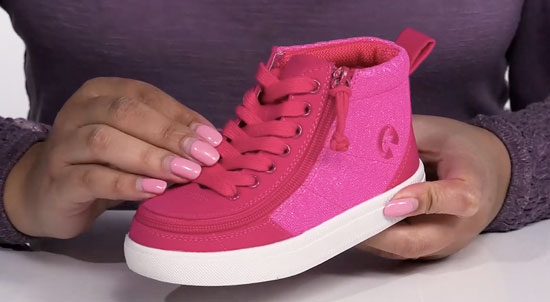
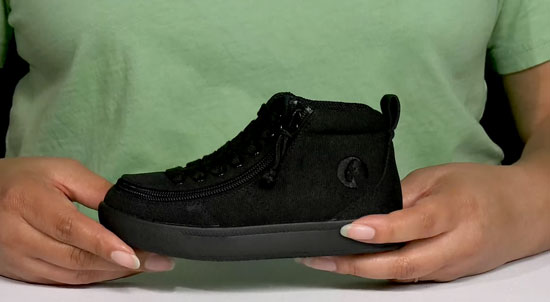
Key Features
- Available for little and big kids
- Order the shoe style Classic DR High II by Billy on Zappos or Amazon
- Available in extra wide widths
- Leather upper
- I suggest that you get this shoe a whole size larger than your child’s current foot size
Reach Out for a Personalized Shoe Recommendation
Each child is unique, and their footwear should reflect that individuality. If you’re unsure about what shoes will best suit your child’s needs, don’t hesitate to reach out for personalized recommendations tailored to your child’s foot shape and condition.
Does Your Child Also Need a Pair of Orthotics?
Orthotics can be incredibly beneficial for children with cerebral palsy. They provide additional support, correct alignment, and can help alleviate pain associated with muscle tension or spasticity. However, whether your child needs orthotics should be determined by a healthcare professional who can assess their specific needs.
Converse Shoes for Orthotics? – Not a Good Idea!
I often see parents bring their kids into the store wearing Converse shoes with orthotics or AFOs, usually mentioning how easy they are to put on. While convenience is important, the real concern is that Converse shoes simply don’t offer the support or structure needed for orthotics to work effectively.
Converse may be stylish, but they’re far from supportive. Their flat soles and soft heel counters make them more of a fashion statement than a functional shoe—especially for children who require stability. In fact, even for kids without foot issues, Converse are best worn for short periods only.

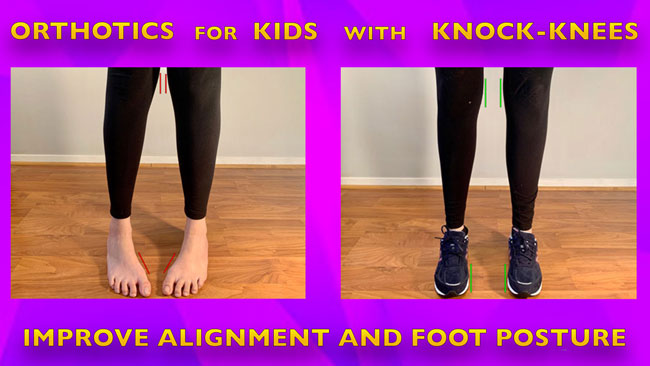
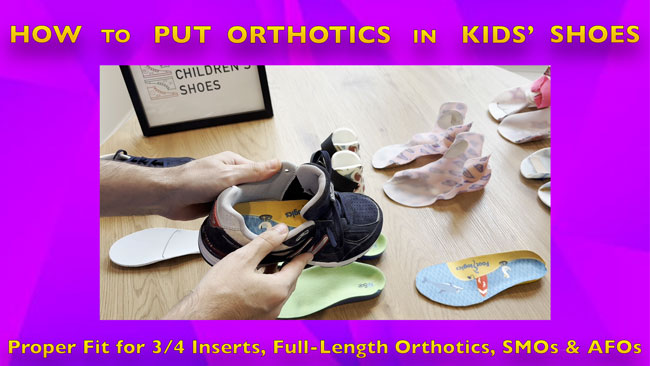
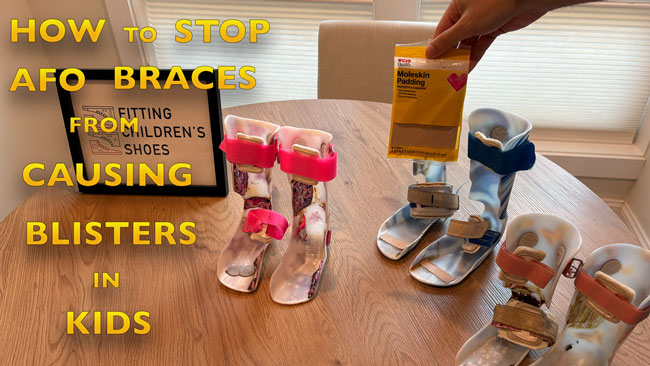
My name is Sophie and I am writing to you with hope of some help or support, I am currently fighting a problem that all children with cerybral palsy have to face. I have a nephew who’s recently turned ten years of age and he unfortunately has a diagnosis of cerybral palsy effecting his learning and mobility but is very fortunate compared to some others.
He’s always suffered problems with his feet and walking or anything that involves taking part or playing any type of sport. Adam has just started to get to the age of liking to watch football and even playing it outdoors with his friends witch has helped him massively with mobility, confidence and losing weight witch has clearly improved his overall health.
They don’t sell football boots for children with CP not anywhere!. I do know that nike have recently brought out a pair of trainers for less able children, I think this is a wonderful idea only they don’t sell them in local trainer and sports shops.
It’s extremely hard for the parents or guardian to be able to purchase them and I feel this is wrong that they would be have to purchased online or travel to the nearest nike stores in hope they have them in store and not to mention the price of them ? considering that children’s feet with cerybral palsy change very quickly and grow very quickly. I feel that the price is disappointing and unreasonable for parents to buy especially with them more than likely depending on disability benefits or personal independent payments from the DWP, not to mention the fact we are all living in a financial crisis.
My aim was to try and raise enough awareness, contact the rite and relevant people and to get people on side with what I am trying to do.
I find it so sad that these children’s excersize is already restricted due to there disability, like my nephew he loves to play football and seems to have found a new hobby he loves and is taken so much interest in. These children should be able to play football comfortably without their feet hurting or causing injury, they should be able to go out to JD, sport’s direct, foot locker and all the other popular stores like all the other children do.
They should be able to buy football boots and enjoy the feel and benefits of them, also not to mention school shoes also.
Over all they should be able to do this at an affordable cost, their parents should be able to afford them and the children shouldn’t be going without or being told that they don’t make football boots for them because of their dis advantages. I have emailed over 100 CP charities I found online, I have emailed all the famous and local football clubs I could find on google and I have tried to contact some of the well known footballer’s. I am just trying everything that I can do possible to try and get some support or help weather that be general or financially.
I need some help with this and pointing in the rite direction or being put into contact with the rite people, I know this isn’t going to be a straightforward or easy to achieve but I have hope and I belive I can make a change with this on going problem and I believe that it is all it could take to fix it. It saddens me so much to watch my nephew play football and struggle and just knowing that there isn’t anywhere that we can go to purchase the necessary footwear that he needs. Things are so advanced in this day and age and it’s pretty poor and disappointing that this is a problem.
I am writing to you just hoping that you may be able to help or offer some support for this cause if you know anybody who can help or even you think they may be able to if I contacted them, I would be very grateful as I am for even your time.
Thank you
Sophie logan
Hello Sophie,
Thank you for bringing up this important issue.
Do you know your nephew’s foot shape (medium, wide, extra wide), and whether he is wearing orthotics inside his shoes? I am happy to help you find the correct pair of soccer shoes for his feet.
i could use your help, my son is high-functioning autistic, and Mild cerebral palsy on the left side I think they call it right hemispheric, he has trouble because his left foot toast a dip so we trips a lot we’ve been trying to get the support Vans type just not working I need help with finding a pair of shoes that are stylish unacceptable it’s hard because he’s autistic and he’s got sensory issues but yet he’s aware that the Styles in the hip things that other kids are wearing oh, he’s mainstreamed has been for years he’s 11 years old and I want to give him the styles that he would like and not be automatically singled out because they look like medical shoes I don’t even know what to call them please can you help us
I am so sorry I did not proofread…his “TOES” drag, the front muscle is too long and the calf muscle is too short so his foot has too much play which allows his toes to hit the ground causing him to trip and fall…we are trying to find him shoes that are stylish and ACCEPTABLE, we don’t know where to go to buy shoes that we are being “specially fitted” so they are “the best fit/comfortable for him” and not just buying off the rack and hope that these ones fit and don’t hurt his feet or there’s some kind of sensory issue with them, or being forced to buy two pairs of shoes to accommodate his feet or his brace… he does not have Orthopedic inserts oh, but he definitely needs support in his left foot…can you possibly help? I am sorry for my previous email that I did not proofread my son is 11 he is high-functioning autistic, mild cerebral palsy, ADHD he is wearing Vans, with “THEIR” version of foot support, but the velcro flap is it long enough to meet to make a closure, I’m not even sure this shoe size he has never had shoes fitted.. if you’re not able to help, could you possibly direct us in the right direction? I thank you for your time
Hello Teri,
I am happy to help.
The first step we should take is to retrieve your son’s exact foot length and shape (medium, wide, extra wide, high instep). If you are unsure of your son’s exact foot length and shape I suggest that you follow the instructions on this article:
How to Measure Your Kids’ Foot – 2 Simple Steps to Determine Foot Length and Foot Width
We will look for shoes that provide extra depth, rounded toe-boxes, substantial outsoles, and firm heel counters.
I also need to know from which country you are contacting me from to check what specific shoes are available in your area.
Please call or respond back. I realy need shoes for my son
Hi Bongi,
Did you send me an email or left me a message and I haven’t responded? Are you looking for a pair of everyday sneakers or what type of shoes are you looking for your son? What is your child’s shoe size?